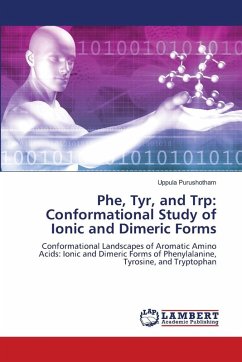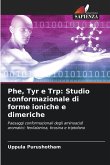This study presents an in-depth conformational analysis of three aromatic amino acids tryptophan, phenylalanine, and tyrosine along with their ionic and zwitterionic forms, using first-principles calculations. For each amino acid, extensive potential energy surface scans revealed numerous stable conformers, including over 50 unique dimeric structures for each. Stabilization of these structures arises from a rich interplay of noncovalent interactions such as hydrogen bonds (especially NH-O), pi-pi stacking, CH-pi, NH-pi, and OH-pi interactions. Monomeric forms favored conformations with strong intramolecular hydrogen bonding, while dimeric forms demonstrated a balance between hydrogen bonding and aromatic interactions. Atoms-in-molecules analysis provided further insight into the strength and nature of these interactions. Comparative observations with Protein Data Bank structures highlighted geometry-dependent preferences: pi-pi stacking dominates at close range, while T-shaped CH-pi interactions are more prevalent at longer distances. These findings illuminate the intricate noncovalent landscape shaping amino acid conformations in biological systems.
Bitte wählen Sie Ihr Anliegen aus.
Rechnungen
Retourenschein anfordern
Bestellstatus
Storno








